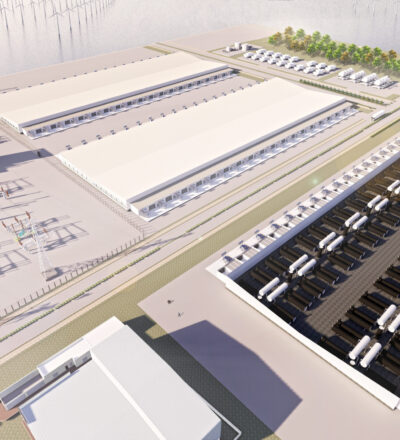Green hydrogen plays an important role in the energy transition as a CO2 and fossil-free energy carrier, feedstock and fuel. However, to meet the great energy demand from industry and transport, we have to produce hydrogen on a large scale.
The current production facilities have a capacity of megawatts, while we need gigawatt installations before 2030. Therefore, last January, the Institute for Sustainable Process Technology presented a design for an innovative and advanced green hydrogen plant at gigawatt scale, which can be operational by 2030.
From megawatts to gigawatts
To meet the new energy needs of industry, transport and other sectors, we need to produce enough hydrogen. The Dutch targets for hydrogen in the Climate Agreement include an electrolysis capacity of 3 to 4 gigawatts (GW) in 2030. And the European ambition is 40-60 GW in 2030. Yet, the largest existing hydrogen factory only has a capacity of a maximum of 10 megawatts (MW). This means we need to upscale fast, and it also has to be affordable.
A green hydrogen plant of 1 GW
Last January, the Hydrohub Gigawatt Scale Electrolyser project delivered an advanced 2030 design for a green hydrogen plant with a capacity of 1 GW. This plant can use both alkaline water electrolysis (AWE) and polymer electrolyte membrane (PEM) water electrolysis to produce hydrogen. The project presented a design for a plant that will start in 2030 in a Dutch port area and will run on wind energy from the North Sea. The factory can operate flexibly depending on the amount of wind. In addition, the design complies with grid code and requirements in safety, health and the environment.
